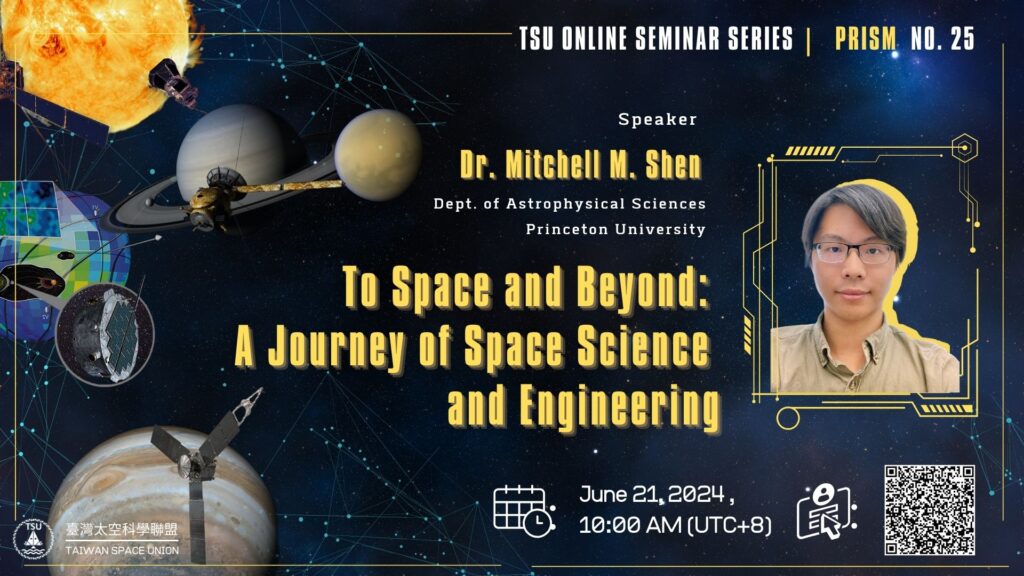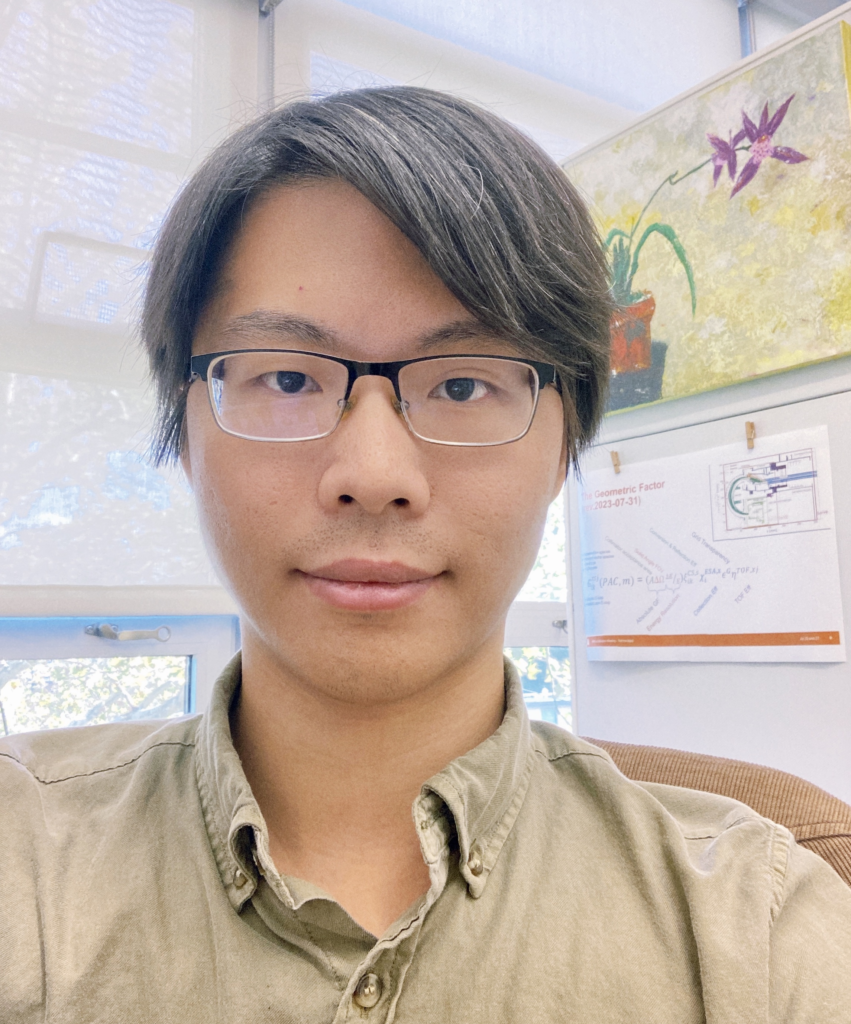
Date: June 21, 2024, 10:00 AM (Taiwan, UTC+8)
Speaker: Dr. Mitchell M. Shen(Associate Research Scholar, Department of Astrophysical Sciences, Princeton University, USA)
Title: To Space and Beyond: A Journey of Space Science and Engineering
VIDEO
Dr. Mitchell M. Shen

Biography
Dr. Shen is a scientist specializing in space plasma, cosmic dust, energetic particles, and heliospheric physics. He earned his B.S. and M.S. in Aeronautics and Astronautics from National Cheng Kung University and a Ph.D. in Aerospace Engineering Sciences from the University of Colorado Boulder. His Ph.D. dissertation focused on dust detection via electric field antenna instruments, using modeling and laboratory measurements. He developed an electrostatic model to better interpret waveform signals from dust impacts, aiding in characterizing dust distributions and populations in the solar system. His master’s thesis involved developing an electron cyclotron resonance ion thruster from scratch in Taiwan. Before his doctoral studies, he expanded his research to space weather, explicitly traveling ionospheric disturbances and magnetosphere-ionosphere-thermosphere coupling.
Dr. Shen is an Associate Research Scholar in Astrophysical Sciences at Princeton University. His work at Princeton includes (1) developing and calibrating the IMAP-Lo & SWAPI instruments for the IMAP mission, (2) studying energetic particles, radio bursts, and dust with the IS☉IS and FIELDS instrument onboard the Parker Solar Probe, and (3) characterizing dust environments using data from Juno/Waves and SolO/RPW.
Abstract
Space, the final frontier, poses many profound questions: Who are we? Where did we come from? How do systems form and evolve? When will we venture further into deep space and beyond? Are we alone? These inquiries are accompanied by countless others. The speaker has surfed his research journey from aviation, combustion, propulsion, Earth science, planetary science, Heliophysics, and instrumentation.
He will begin his talk by discussing the ongoing missions of the Parker Solar Probe, Solar Orbiter, and the developing Interstellar Mapping and Acceleration Probe (IMAP) mission. The first two missions study our star and the solar-terrestrial interaction, while the IMAP mission measures the solar wind as well as the heliosphere’s “echo” when this material reaches and interacts with the outer boundaries of our solar system. Interplanetary dust’s complex makeup undergoes a continuous production, transportation, and diminishment cycle through various physical processes. The speaker will briefly introduce leveraging detection and analyses of dust particles; we can learn about the formation and evolution of the solar system, including the original and processed materials and the vast range of physical processes in action.
As a scientist with an engineering background, a Taiwanese individual who has studied and worked abroad, and now involved in NASA missions, the speaker aims to share his journey. Transitioning from student to postdoc to awarded PI researcher, he seeks to inspire others and increase participation in space exploration.

